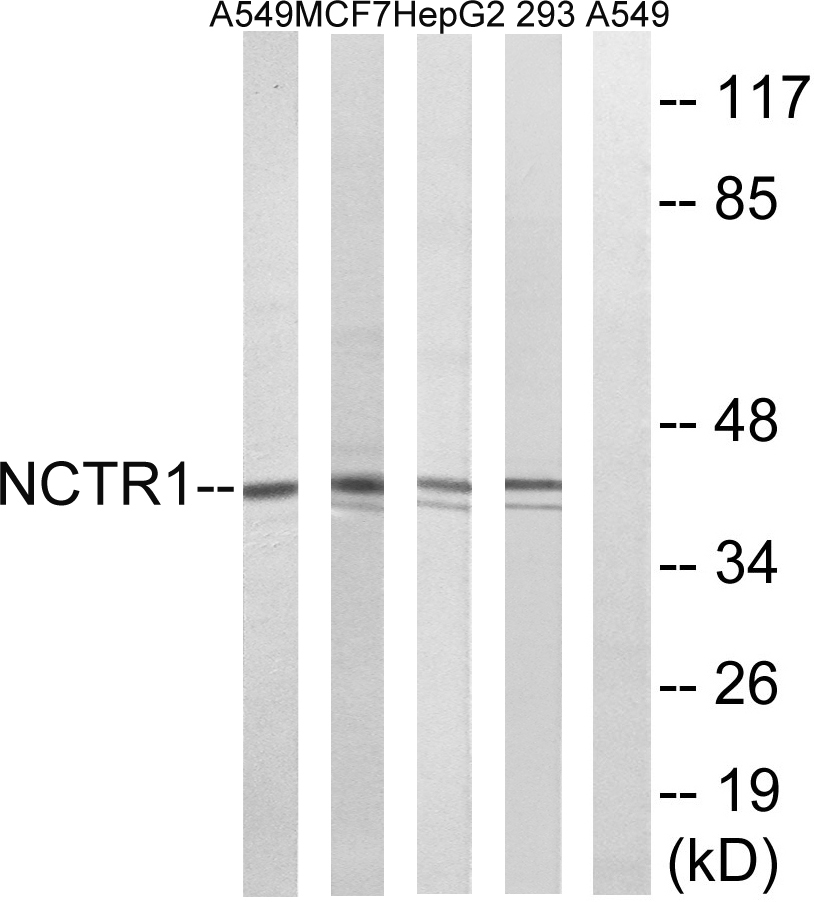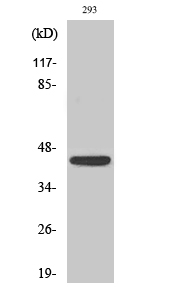产品名称
NKp46 Rabbit Polyclonal Antibody
别名
NCR1; LY94; Natural cytotoxicity triggering receptor 1; Lymphocyte antigen 94 homolog; NK cell-activating receptor; Natural killer cell p46-related protein; NK-p46; NKp46; hNKp46; CD antigen CD335
蛋白名称
Natural cytotoxicity triggering receptor 1
存储缓冲液
Liquid in PBS containing 50% glycerol, 0.5% BSA and 0.02% New type preservative N.
Human Gene Link
http://www.ncbi.nlm.nih.gov/sites/entrez?db=gene&term=9437
Human Swissprot No.
O76036
Human Swissprot Link
http://www.uniprot.org/uniprotkb/O76036/entry
Mouse Swissprot No.
Q8C567
Mouse Swissprot Link
http://www.uniprot.org/uniprot/Q8C567
免疫原
The antiserum was produced against synthesized peptide derived from human NCR1. AA range:145-194
特异性
NKp46 Polyclonal Antibody detects endogenous levels of NKp46 protein.
稀释度
WB 1:500 - 1:2000. ELISA: 1:10000. Not yet tested in other applications.
宿主
Polyclonal, Rabbit,IgG
背景介绍
function:Cytotoxicity-activating receptor that may contribute to the increased efficiency of activated natural killer (NK) cells to mediate tumor cell lysis.,PTM:N-glycosylated.,PTM:O-glycosylated.,similarity:Belongs to the natural cytotoxicity receptor (NCR) family.,similarity:Contains 2 Ig-like (immunoglobulin-like) domains.,subunit:Interacts with CD3Z and FCER1G.,tissue specificity:Selectively expressed by both resting and activated NK cells.,
组织表达
Selectively expressed by both resting and activated NK cells.
细胞定位
Cell membrane ; Single-pass type I membrane protein .
信号通路
Natural killer cell mediated cytotoxicity;
功能
function:Cytotoxicity-activating receptor that may contribute to the increased efficiency of activated natural killer (NK) cells to mediate tumor cell lysis.,PTM:N-glycosylated.,PTM:O-glycosylated.,similarity:Belongs to the natural cytotoxicity receptor (NCR) family.,similarity:Contains 2 Ig-like (immunoglobulin-like) domains.,subunit:Interacts with CD3Z and FCER1G.,tissue specificity:Selectively expressed by both resting and activated NK cells.,
纯化
The antibody was affinity-purified from rabbit antiserum by affinity-chromatography using epitope-specific immunogen.


